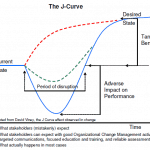Associative versus Sequential Thinking
Associative versus Sequential Thinking
Is your thought process primarily associative or sequential? Do you know the difference? Want to discover more about yourselves and others so that you can take greatest advantage of team strengths?
Cognitive styles identify how we interact with people and how we communicate. They can also help us to understand how we learn, what motivates us and converts thought into action, and how we experience or perceive the world. Aristotle suggested that knowledge is ultimately based upon how we perceive the world around us. Although the sciences of physics, philosophy, biology, zoology, ethics, logic, linguistics, politics and government have evolved substantially in the 2400 years since Aristotle’s birth and contributions, many of his basic concepts remain at the core of behavioral understanding and research.
In my webinar Understand the Mind – Become a Better Project Manager, I discuss the difference between fast switching and multi-tasking. (We can’t really multi-task, our brains fast switch). Our brain structure and neurochemistry are hard-wired for specific approaches to external stimulae and change. My webinar is a brief introduction to the application of neuroscience to behavioral understanding within the realm of project management.
The neuroscience tools of the 21st century are just beginning to allow us to confirm the neurological mechanisms that control behaviors identified merely through observation for the past 2000 years. We now know better how many human behavioral systems work internally. This allows us to rely less solely upon psychological evaluations and characteristic assessments. Assessments based upon physical classifications and fact enable us to better understand cause, and manage effect. We can manage what we understand, and should focus efforts toward change only upon the factors that we can control.
Our brains apply associative and sequential systems as a means to interact with the world. Much like left or right handedness, we hold a predisposed dominance for one system over the other. We use both, and their inter-relationship is critical to how we interact with the world. Approximately sixty percent of humanity is sequentially dominant, while forty percent are associative. Three to four percent are cognitively ambidextrous relative to sequential and associative systems, which translates to an ability to switch rapidly from one system to the other.
For Project Management Professional Certification, candidates need to understand varied models used to identify the needs and perspectives of stakeholders, including team members, relative to motivation and conflict resolution. The tools promoted within Project Management have historically been observational. Common motivational models include Maslow’s hierarchy of needs, Macgregor’s theory X and Y, and Herzberg’s hygiene theory. The Blake-Mouton managerial grid provides key insights relative to conflict management. All four of these models are based upon sociological interaction. While relevant within team and project settings, they incompletely identify human perception.
I have also regularly promoted the work of Dave Logan, John King and Halee Fischer-Wright, authors of Tribal Leadership as a model to understand the linguistics as a measurement of perspective, team culture and leadership.
My current priorities include the creation of new project management content in preparation for the Project Management Body of Knowledge™ 6th edition (scheduled for December 2016 release). As the volume of knowledge necessary to pass the certification exam increases, I am revisiting my list of key content that candidates need to know, and my approach to content outline and delivery most conducive to promoting knowledge retention. The application of both associative and sequential systems are critical to the processing and retention of information.
Course development efforts cause me to revisit the work of Frank Sopper, President of Open Book Consulting and Open Book Learning. Frank has been studying how humans process information, think and learn since the early 1980’s, and regularly incorporates lessons learned from modern neurochemistry studies. Frank’s work includes extensive studies regarding our associative and sequential systems.
Humans use our brains to process information in both an associative and sequential fashion continually.
Frank refers to the associative system as ‘predictable randomness’. Associative efforts afford us a broad view to place experiences in context. This allows us to place new experiences within an understandable context. The associative system allows us to deal with events that might be predictable, but occur at random times. Borrowing from one of Franks examples: our ability to deal with brake lights, honking horns, lane changes, and other distractions on a busy highway. Related efforts require ‘fast switching’ along with rapid recognition of context, alternatives, and appropriate action.
The sequential system slows us down, enabling us to hold our attention and focus on a specific topic or point of experience. The sequential system provides the ability to marshal our full focus, attention and resources on a single effort or process for extended periods. I associate the sequential system with application of the frontal cortex and the ability to logically process complex tasks. In Frank’s terms, the sequential system makes our brain ‘sticky’ so we don’t wander. His example for a sequential system includes driving on that same busy highway but thinking about the exit we need to take in two miles, after which we turn right and the bottom of the off ramp, and proceed three more miles to our destination. ‘Sticky’ works when we don’t want to lose our way to a known destination. The same approach might not be as useful when the environment is new, changing, or contextually altered.
Our experience of the world changes when we are in one mode or the other, affecting our perception, our memories, and our understanding.
Given that 60% of the world is sequential system dominant, human processes that rely on the associative system tend to be relegated a lesser status. This can cause problems when we seek a clearly deep and logical solution for a new experience for which we have low or no context. Aristotle referred to the concept of nurture as Nomos. Nomos accounts for law, custom, convention and a clear perception of the world in logical terms. The opposite is Adikos – the Greek for injustice, unrighteousness, doing wrong. The associative process is often ‘disorderly’, at least relative to the sequential process. Without the associative system, however, we have no context within which to understand that which is new and changing in our world. A great plan should take into account both sequential and associative systems, and the strengths that each provide.
You use both systems. Toward which system do you perceive place greater emphasis? You could always take the cognitive style survey offered by OpenBook consulting.
For additional and related information on cognitive styles you might want consider the following resources:
- For a great introduction to Frank’s work, you might want to listen to an interview conducted by Anthony Iannarino during one of his ‘In the Arena’ podcasts titled Frank Sopper: Sales Success by Understanding Your Own and Your Prospect’s Thinking – Episode #60 that focuses on the differentiation between associative and sequential thinking.
- During the interview and across the OpenBook consulting website, David Allen of Getting Things Done is mentioned and mentions having been strongly influenced by Frank’s work. You might also consider David’s book with the same title.
- Associative and sequential thinking might also be coordinated with the theories and science of Daniel Kahneman 2002 Nobel prize winner in economic science and author of the book Thinking Fast and Slow. Kahneman and Tversky developed ‘prospect theory’ based upon their psychological studies that uncovered more than 20 cognitive biases.
I look forward to seeing you in the classroom or online.
Steven Fullmer
Interface Technical Training Staff Instructor
Steve teaches PMI-PBA: Business Analysis Certification, PMP: Project Management Fundamentals and Professional Certification, Windows 10, and CompTIA classes in Phoenix, Arizona.
You May Also Like
David Allen, Frank Sopper, Getting Things Done, OpenBook learning, PMBOK, PMPC, Project Management
A Simple Introduction to Cisco CML2
0 3901 0Mark Jacob, Cisco Instructor, presents an introduction to Cisco Modeling Labs 2.0 or CML2.0, an upgrade to Cisco’s VIRL Personal Edition. Mark demonstrates Terminal Emulator access to console, as well as console access from within the CML2.0 product. Hello, I’m Mark Jacob, a Cisco Instructor and Network Instructor at Interface Technical Training. I’ve been using … Continue reading A Simple Introduction to Cisco CML2
Creating Dynamic DNS in Network Environments
0 645 1This content is from our CompTIA Network + Video Certification Training Course. Start training today! In this video, CompTIA Network + instructor Rick Trader teaches how to create Dynamic DNS zones in Network Environments. Video Transcription: Now that we’ve installed DNS, we’ve created our DNS zones, the next step is now, how do we produce those … Continue reading Creating Dynamic DNS in Network Environments
Cable Testers and How to Use them in Network Environments
0 731 1This content is from our CompTIA Network + Video Certification Training Course. Start training today! In this video, CompTIA Network + instructor Rick Trader demonstrates how to use cable testers in network environments. Let’s look at some tools that we can use to test our different cables in our environment. Cable Testers Properly Wired Connectivity … Continue reading Cable Testers and How to Use them in Network Environments




